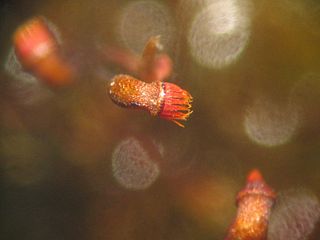
The Bryopsida constitute the largest class of mosses, containing 95% of all moss species. It consists of approximately 11,500 species, common throughout the whole world.
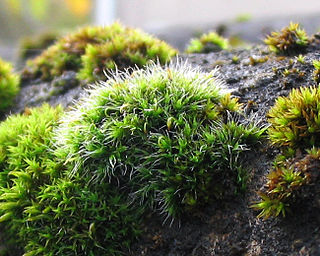
Grimmiales is an order of mosses in the subclass Dicranidae. It comprises four families: Grimmiaceae, Ptychomitriaceae, Seligeriaceae, and Saelaniaceae.

Pottiales is an order of mosses in the subclass Dicranidae.
Neckeropsis is a genus of plant in the family Neckeraceae.

Bryaceae is a family of mosses.

Dicranaceae is a family of haplolepideous mosses (Dicranidae) in class Bryopsida. Species within this family are dioicous. Genera in this family include Dicranum, Dicranoloma, and Mitrobryum.
Scouleriales is an order of haplolepideous mosses in the subclass Dicranidae.

Ditrichum is a genus of haplolepideous mosses (Dicranidae) in the family Ditrichaceae.
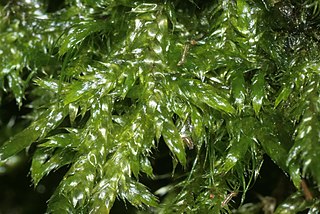
Sematophyllaceae is a family of mosses, known commonly as signal mosses. They grow on rocks in wet or humid places. and are found nearly worldwide, especially in tropical and temperate regions. There are about 150 species, which form yellow to yellow-green mats with reddish stems.

Ptychomitriaceae is a family of mosses in the subclass Dicranidae.
Pseudoditrichales is an order of haplolepideous mosses in the subclass Dicranidae. It comprises two families, Pseudoditrichaceae and Chrysoblastellaceae. Pseudoditrichaceae was previously placed in Bryales, while Chrysoblastellaceae is a new family erected for Chrysoblastella, which was previously placed in Ditrichaceae.

Erpodiaceae is a family of haplolepideous mosses (Dicranidae) in the order Dicranales. It consists of six genera.

Rhabdoweisiaceae is a family of haplolepideous mosses (Dicranidae) in the order Dicranales. It consists of 16 genera.

Distichium is a genus of haplolepideous mosses (Dicranidae) in the monotypic family Distichiaceae.
Timmiellaceae is a family of haplolepideous mosses (Dicranidae). It contains two genera, Luisierella and Timmiella, that were formerly place in family Pottiaceae.
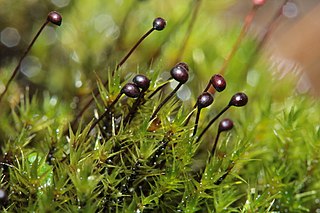
Catoscopium is a genus of haplolepidous mosses (Dicranidae) in the monotypic family Catoscopiaceae .
Micromitrium is a genus of haplolepideous mosses (Dicranidae) in the monotypic family Micromitriaceae . The genus Micrometrium was previously placed in family Pottiaceae in order Pottiales.

Octoblepharum is a genus of haplolepideous mosses (Dicranidae) in the monotypic family Octoblepharaceae . The genus Octoblepharum was previously placed in family Calymperaceae.
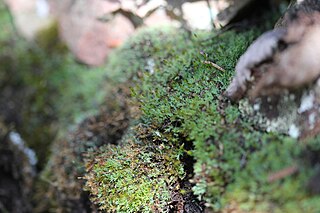
Saelania is a genus of mosses in the monotypic family Saelaniaceae in subclass Dicranidae. The genus was previously placed in family Ditrichaceae. Saelania is named after Finnish botanist Thiodolf Saelan.

Pleurophascum is a genus of haplolepideous mosses (Dicranidae) in the monotypic family Pleurophascaceae. The family was previously place in the order Pottiales, but is not place in its own monotypic order, Pleurophascales.















